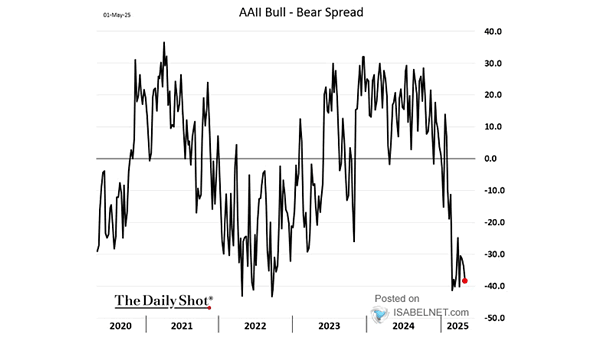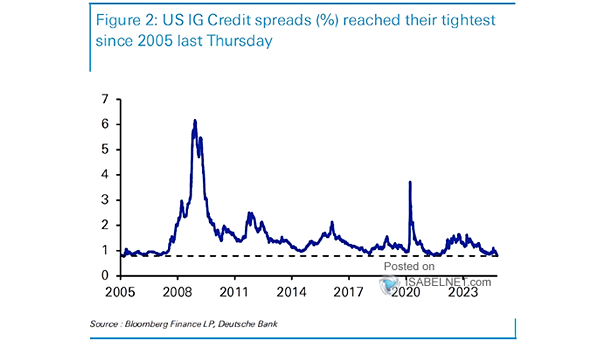AAII U.S. Investor Sentiment Bull – Bear Spread
AAII U.S. Investor Sentiment Bull – Bear Spread The AAII US investor sentiment bull-bear spread indicates a shift towards a more cautious outlook, reflecting a decline in bullish sentiment and a rise in bearish sentiment among individual investors. Image: The Daily Shot


